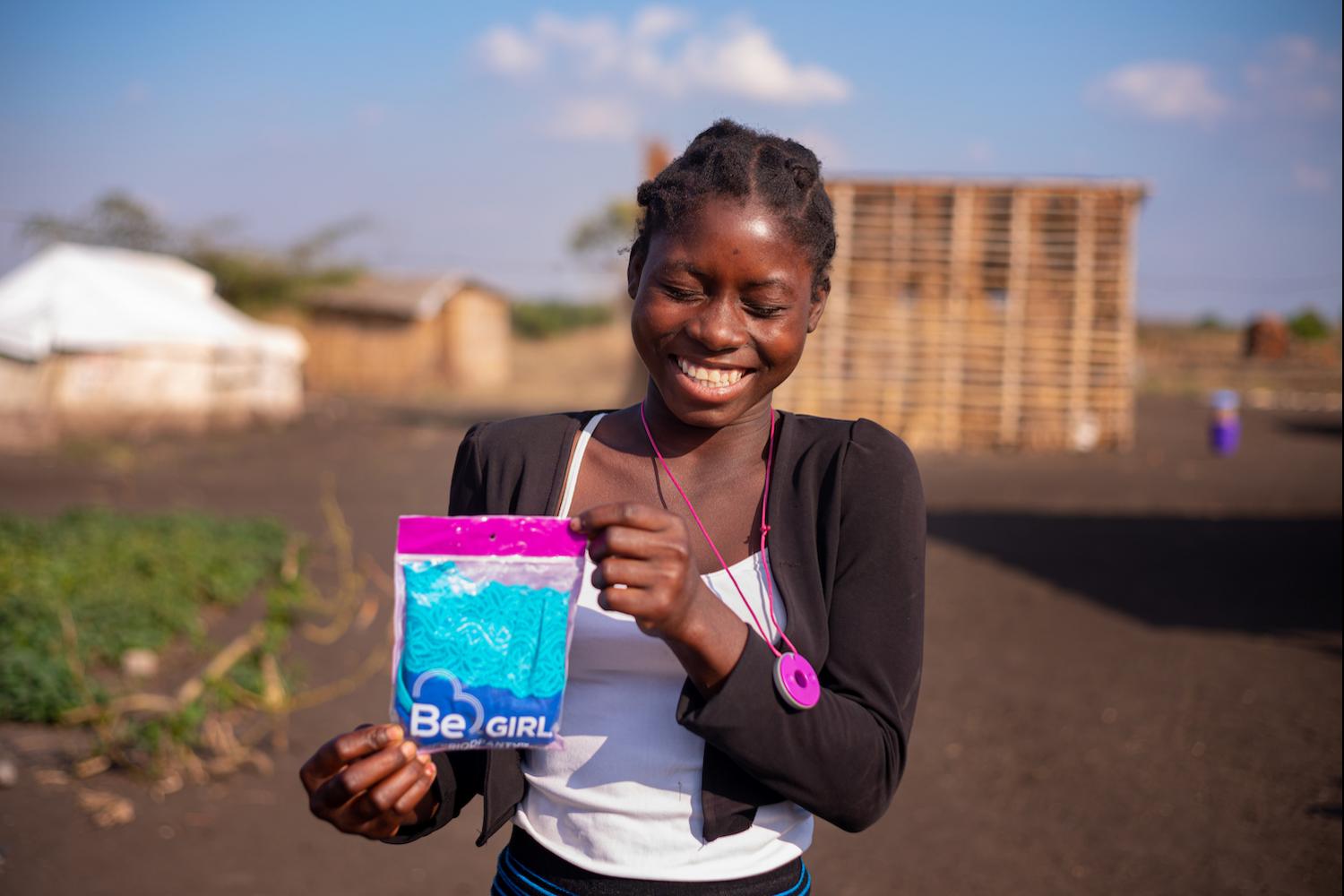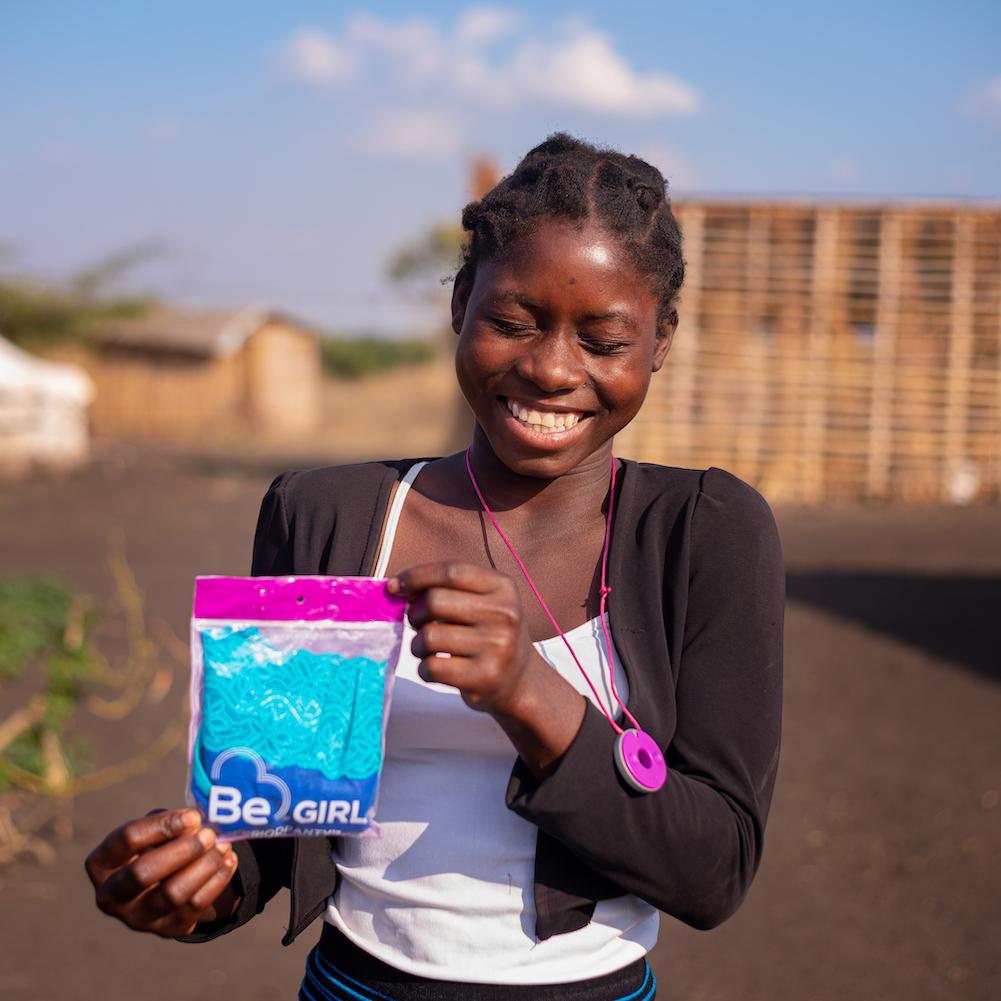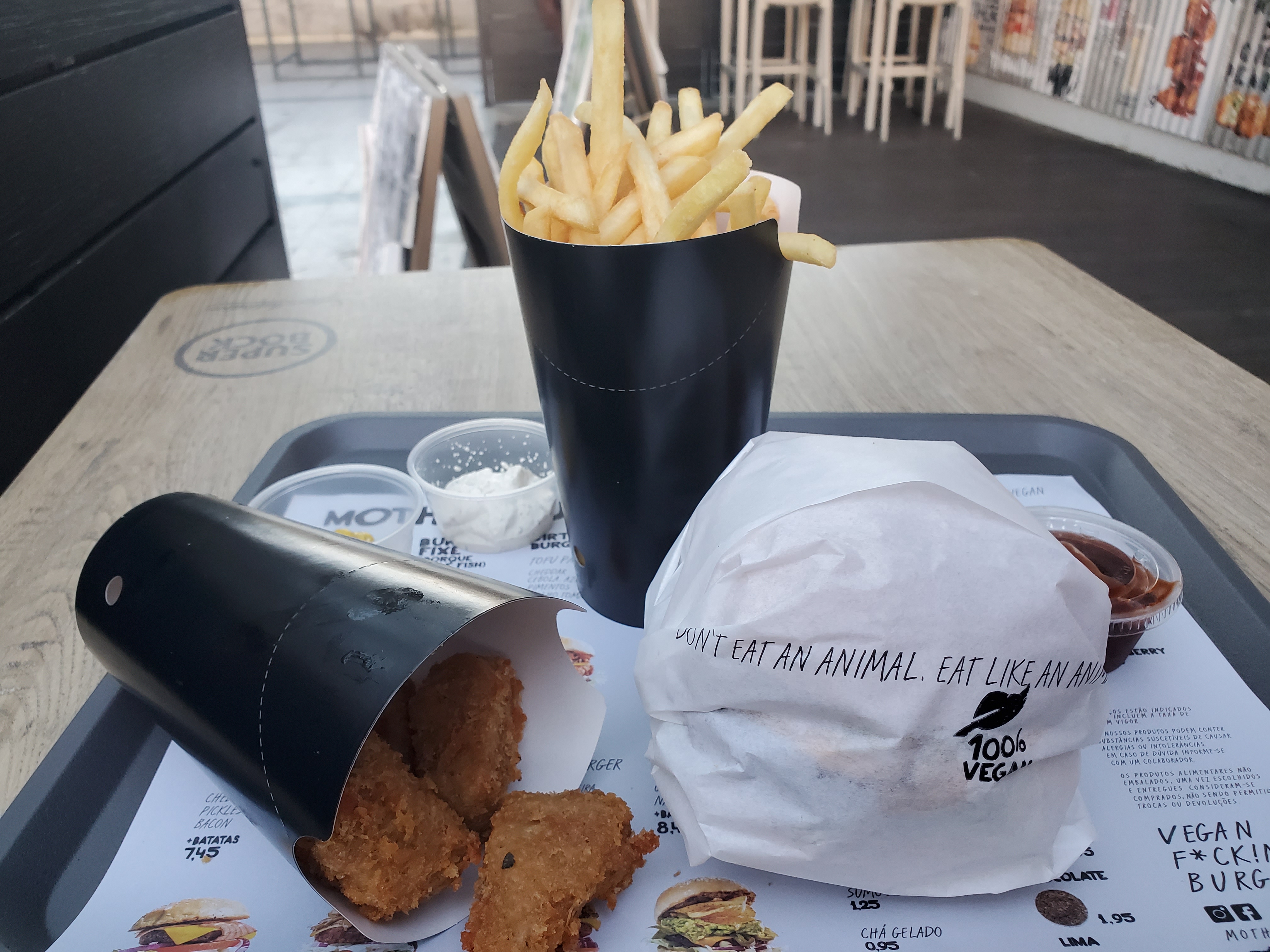Goals for Safe Water Worldwide Face a Stubborn Data Problem


More than 100 countries are poised to fall short of their goals to manage their water supplies sustainably by 2030, as set out in the United Nations’ Sustainable Development Goal 6 (SDG6). According to a new report by the World Meteorological Organization, current action needs to quadruple to reach the goal of providing universal access to safe water and hygiene. Further, countries must meet SDG6 while experiencing unprecedented water-related impacts from climate change.
Floods and droughts are among the barriers to safe water for all
So why is safe water proving to be an elusive goal for many countries? Let’s start with the fact that since 2000, the world as has seen a significant increase in flood- and drought-related disasters, with every region affected. Flood-related disasters have increased by 134 percent, with Asian countries bearing the brunt. Meanwhile, drought-related disasters have increased by 29 percent, with African countries suffering the harshest impacts.
Between 1970 and 2019, the world saw over 11,000 climate-related disasters, causing economic losses of $3.6 trillion and over two million deaths. Droughts and floods are the deadliest weather-related events after storms. In 2020 alone, the world saw an 18 percent increase in flood-related deaths than the annual average. And between 2000 and 2019, drought affected nearly 1.5 billion people globally.
As countries continue to suffer from droughts and floods, more of them recognize the importance of a focus on securing safe water within their climate goals. In their report, the WMO notes that 79 percent of Nationally Determined Contributions (NDCs) - the efforts laid out by each country to meet Paris Climate Agreement goals - have safe water as an adaptation priority. Further, virtually all SDGs relate to water in some way, even if it is not explicitly stated, since water is a cross-cutting factor of every sector.
Many NDCs include water-related actions in capacity building, forecasting, observing networks and data collection. A majority of countries lack the capacity to provide climate services for water and are often constrained by limited access to financing. These challenges are circular: Underdeveloped capacity and insufficient data increase risk for investors while these countries require funds to overcome these challenges. Some of these concerns are more prevalent in developing countries, but poor water data is an ongoing problem worldwide.
The dearth of reliable data also is a challenge to securing safe water
Inadequate and inconsistent data plague water systems across the spectrum, from utility leakage rates to groundwater levels and beyond. Hence the water sector is often referred to as data-rich, but information-poor. Consistent measuring and capacity for data collection and dissemination makes information sharing challenging. Further, the regulation of water exists at several levels from the hyper-local to national and sometimes super-national; and those regulatory frameworks are often inconsistent, which can lead to conflict.
With competing needs over essential water services, the scenario is ripe for legal, political and even physical conflict. It is a problem seen even in the U.S., as evidenced by the decades-long Tri-State Water Waters in the southeastern U.S. Experts in California have also noted that better data could help with drought management in the state.
Differences in capacity between jurisdictions further hamper effective conservation and regulatory action.
According to the WMO, 40 percent of member countries do not collect data for basic statistics, such as water levels and discharge. Lack of adequate data hampers both the effectiveness of climate solutions and early warning systems.
As a result, the ability to meet safe water targets will continue to be difficult if countries do not have a grasp on basic water data. The report notes that regional needs for data collection and management is a top priority in North and Central America, Africa, Europe and the southwestern Pacific, while it is within the top three priorities for South America and Asia.
In addition to having the best possible data, it is also essential to have effective data management. The development of consistent data collection and measurement across and between states, countries, and regions would help with understanding hydrological patterns and how they are affected by climate change. Results could include an easier path to sharing best practices and lessons learned between similar climates experiencing comparable water-related events. The data inconsistencies will further affect other sectors with which the water sector intersects, including agriculture, infrastructure, public health and energy.
Water data is vital to plan for adaptation and mitigation
While the WMO report notes the actions needed to be taken for countries to meet adaptation goals related to safe water, the sector also has an important role to play in mitigation. Water’s connection to the energy sector is often undercounted. Traditional fossil fuel- and nuclear-powered electricity require considerable amounts of water to generate electricity, as do some forms of renewable energy, including hydropower, geothermal and concentrated solar power. Conversely, the water sector requires significant amounts of energy to treat, move, and distribute water; the same goes for other water technologies such as desalination and water recycling.
The intersection of the water and energy sectors could be an important avenue to addressing climate change. Nevertheless, problems with data plague this intersection as well. The measurement of electricity is more straightforward than that of water, and data overall is better, which makes comparing the two difficult. Further, the two sectors do not speak the same language when it comes to data, creating obstacles to collaboration. Nevertheless, these obstacles are easily overcome with some effort, as seen when the two sectors engage with each other.
Improved data decreases risks to investors, which can enable financing to enter the water sector in more robust levels. It may at first appear to be a simple solution, but the inconsistency of capacity spins the problem round and round.
The bottom line is that the WMO’s report highlights that water stress and extreme events have plagued areas around the world and will continue to do so as climate change risks continue. Leaders recognize the need to improve data collection and management. Better communication across the sector to learn from other utilities, countries, and stakeholders could facilitate not only better data, but better solutions to prevent catastrophic damage from future water-related events.
Image credit: Amritanshu Sikdar via Unsplash
This Social Enterprise Wants to End Period Stigma and Empower Women and Girls


When Diana Sierra founded Be Girl a decade ago, global period protection wasn't yet a hot topic. In traveling to Uganda, she was surprised to learn that girls lacked effective ways to manage their periods. While working on United Nations-funded projects, local girls would often ask her for jobs, and Sierra saw they had a serious need for income. Connecting the dots, she realized these girls were missing a quarter of the month of their schooling or work when their periods came around because they could not afford hygiene supplies. Global studies have confirmed a similar connection between menstruation and lost wages, the United Nations Population Fund reports.
The girls she met used absorbent material, such as torn rags or pieces of mattress, to manage their periods, solutions Sierra said can be uncomfortable and ineffective. As an industrial designer, she was inspired to create something new. Her first PeriodPanty prototype was made out of mosquito netting and umbrella material. She pursued the project after work hours, making alterations and gathering feedback, until one response changed her course. A girl in Tanzania wrote in a survey, “What I like best — it makes me proud to be girl!” The next day, Sierra quit her day job and leaped head-first into her social enterprise.
Sierra said moments like this showed her that Be Girl is about more than panties, pads and menstrual cups. She sees the products she makes as vehicles for upending harmful narratives about menstruation, increasing body agency, and helping girls and women embrace and love who they are.

“We need to be transformational going forward”
“It is high time we throw aside the myths and misconceptions and the negativity that, for too long, has surrounded the menstrual life cycle, from menarche to menopause,” Dr. Julitta Onabanjo, the U.N. Population Fund’s regional director in East and Southern Africa, said at the first African Menstrual Health Management Symposium in 2018.
“We need to be transformational going forward,” she added. Be Girl has been quietly transforming its corners of the world through innovative and empathetic designs. Over the past six years, the initiative has distributed more than 250,000 products to women and girls in over 30 countries and provided age-appropriate education to help boys and girls understand the beauty of menstruation.
Understanding that many around the world have trouble accessing products and services “just because they happen not to be in a viable market,” Sierra said she strives to develop products specifically for the markets she serves, not as “parachute solutions” dropped from the global north into economically developing nations.
Her creative process was founded on respect for the user, which included gathering regular feedback from girls and taking that feedback seriously, she continued. While girls had absorbent material, they needed something comfortable and leakproof. Sierra's PeriodPanty design can transform any absorbent material into a sanitary pad — communicating to girls that what they were already doing was right, but the PeriodPanty could help them do it better.
Sierra’s team continues to listen to the girls it serves. When girls said they loved the product but wondered why the panties were black and didn’t come in “girly” colors, Sierra realized her customers saw the underwear as an accessory and not simply a practical necessity. Yet again, she thought out of the box and used colors like bright blue and purple, which still disguise any leaks but look fun while doing it.

Solving more than half the problem: Teaching boys about menstruation
The Be Girl team does more than sell menstrual products. It also engages girls and boys around the world in conversation. Just like her creative process, Sierra's approach to these conversations evolves with feedback. Initially, the team spoke exclusively with girls. But the prevailing issue girls report about their periods is being bullied by boys. Sierra realized her team was only solving half the problem because they were only talking to half the population.
“[Boys] are as important and crucial to this matter, and they're being left out in complete ignorance," she said. "We started doing some workshops, but the real click was when we designed the SmartCycle." The SmartCycle is a small mechanical disk that can track a woman's menstrual cycle. On one side of the disk, numbers represent the days of a cycle. The other side has symbols representing the key phases of a cycle — menstruation, ovulation and preparation. As you turn the disk to the proper day, it clicks into place.
This toy Sierra designed for girls actually became a gateway for boys. While Be Girl representatives talk to girls about menstruation with sanitary pads in their hands, that same solution wouldn't work with boys. "It's very shocking," Sierra explained. "It's very difficult, so you needed to have another entry point, and this little clock, being something mechanical … really caught their attention."
Boys now go through Be Girl’s classes with a SmartCycle in their hands and are tasked with giving it to a girl or woman who is important to them and teaching her how to use it. Be Girl calls these boys’ workshops "Building Cycles of Empathy."

How mentorship helped this social enterprise scale
When Kimberly-Clark and its foundation, the company’s Kotex brand, and the Toilet Board Coalition launched the Women in the Sanitation Economy Innovation Lab in 2020, Be Girl was focused on scaling. Sierra joined the six-month program, which looks to cultivate women-led and women’s health-focused businesses within the sanitation economy. Through the program, Kimberly-Clark’s employees offered expertise and guidance to Sierra and four other impact entrepreneurs from Kenya, the U.S. and the U.K who are all focused on addressing some of the world’s most critical sanitation issues.
Be Girl’s team had a chance to speak with advisors they wouldn’t normally encounter, said Tatiana Reyes Jové, chief growth officer for Be Girl. The mentorship experience also helped the small company understand and address challenges to growth. “I currently lead both supply chain and business-to-consumer sales and marketing, so having a trusted expert advisor that I can turn to and problem-solve with has made a world of difference,” she told TriplePundit. Be Girl’s two mentors, specializing in supply chain and sales and marketing, helped the business attain key milestones this year, Jové said, part of which included entering the Kenyan market.
Be Girl aims to keep getting bigger. ”I really want to make sure that Be Girl is kind of like the Nike of period panties in emerging economies,” Sierra told us.
And what is a world with more Be Girl? The vision Sierra hopes everyone supports in their own way — whether through finance, activism, art or any avenue — is one where individuals progress in their education and careers based on merit, not gender. “In our case, we work in menstrual health, menstrual protection and education,” but everyone can do their part in creating this equitable landscape, she said.
This article series is sponsored by Kimberly-Clark and produced by the TriplePundit editorial team.
Images courtesy of Be Girl
This Chain Is Taking on Portugal’s Carnivorous Food Scene, One Vegan F*cking Burger at a Time


Portuguese food is often overlooked, though in fairness that was often true of its neighbor, Spain, until José Andrés arrived on the culinary scene in the 1990s. Someone will emerge from this coastal gem onto the U.S. restaurant scene at some point, and soon we'll all be talking about Portugal’s cuisine as if we'd been in the know all along.
In the meantime, the nation home to 10-plus million along with its farmers, dairies, fisheries and food producers more than hold their own, whether we’re talking breads, cheeses, produce, wine — and, of course, seafood and charcuterie. While at a first glance many menus may seem overwhelming to the vegetarian or vegan visitor, change is underway.
And no, we’re not just talking a token vegetarian menu limited to pasta and salads. More restaurants are expanding their meat-free menu selections, and just about any sizable city has vegan eateries that are easy to find. Supermarkets and hypermarkets such as Continente are also rolling out vegan options such as plant-based deli slices and sausages.
Not that this shift was completely organic in nature. Portugal’s government recently mandated that all eateries must include a vegan option. Meanwhile, the number of Portuguese citizens who identify as vegetarian or vegan has skyrocketed over the past several years.

Of course, this niche within Portugal’s evolving food scene just happens to be unfolding as the ongoing burger craze is also slathering itself across the country. Travelers craving such a thing won’t go hungry. For example, the answer to LA’s pastrami burger in cities like Lisbon and Guimarães include patties topped with presunto (dry cured ham) and queijo de Serpa (a sheep milk-based cheese) from the Alentejo, a region in southern Portugal that’s increasingly becoming a popular foodie destination.
Nevertheless, independent restaurants and small chains are resisting, persisting and serving decadent eats without the use of meat, thereby skirting any harmful impact on animals and the environment. One of them is Mother Burger, which currently has three locations in Lisbon with more on the drawing board.
Mother Burger, which launched in 2019, is food porn at its best. Let’s start with the messaging: It’s very in-your-face, and it's guaranteed that your face will become gloriously messy after you hoover up one of its decadent creations. It’s also the Schitt’s Creek of burgers: As was the case with that show’s approach toward love and sexuality, at Mother Burger, there is no explaining, there are no apologies — only really f*cking good burgers, nuggets, cheesy croquettes and milkshakes, all of which are plant-based. Mother Burger simply is what it is — a normal, sloppy, decadent foodie experience. The wrappers make it both stark and clear: These are burgers, and vegan burgers at that, and you will love them — and you will come back, and you will love the experience again. TriplePundit certainly did.
Options at Mother Burger include varying bursts of spice, umami and sweetness revolving around patties that are tofu-based, made with seitan and textured like chicken. If you wish to spend an additional euro, you can also get the “fake meat” option, which is self-explanatory. Flavor profiles include plant-based burgers drizzling with guacamole, fake pub cheese, mushroom confit or caramelized onions, all of which hit the spot whether you are starving, hungover or want to show your mother (or father) that yes, vegan can be both messy and beautiful.

The star of the show is Mother Burger’s homemade vegan patty, made with local ingredients that include beets, lentils, black beans, coconut oil, oats and mushrooms. No, it does not bleed like the infamous Impossible Burger, but it’s substantial, flavorful and light-years away from the grubby, crumbly options to which many non-meat eaters had long been relegated.
For those in need of a palate cleansing after the debauchery (some of Mother Burger’s concoctions are a bit much, even if in a good way), at all three locations (as with any restaurant in Portugal), a shop selling gelado (ice cream or gelato) is only a few steps away. Many of those have vegan options as well, including classic flavors of fruit sorbet.
“I thought it would be more of a ‘meh’ place well-known only for being vegan,” wrote one reviewer on Facebook, who was quick to add that her experience was “top.”
Mother Burger will win more fans in the near term, but it can’t sit on its laurels. After all, the number of vegan and vegetarian restaurants in Lisbon alone keep increasing and score highly on any menu creativity index.
Image credits: Leon Kaye
Iraq Takes a Step Toward Ending Its Resource Curse


It does not take much online sleuthing to sort out why Iraq, among many other nations rich in hydrocarbons, has long struggled with its very own resource curse. The country’s ongoing symptoms include an education system that had once ranked highest in the Arab world but has since collapsed; a youth unemployment rate estimated at 25 percent or even higher depending on the source; and participation of women in the workforce that is among the lowest on the planet.
“While oil wealth allowed Iraq to obtain upper-middle-income status, in many ways its institutions and socioeconomic outcomes resemble those of a low-income, fragile country,” the Brookings Institution concluded in a report a year ago. “Growth is driven by oil production — and related investment — but not productivity.”
An agreement inked last week with Abu Dhabi’s Masdar could help nudge Iraq toward more sustainable and equitable growth.
Masdar, a renewable energy company based in the United Arab Emirates, recently announced it has committed to develop five solar photovoltaic (PV) projects across Iraq. If all goes to plan, together they would provide the nation of 40 million with 1 gigawatt of clean power. Last week’s signing comes a few months after Masdar said it would work with two Iraqi government agencies to fund projects that could add another 1 gigawatt of power to the country’s grid.
Two gigawatts of clean power in a country that derives 97 percent of its energy needs from oil and gas hardly means that a sea change is underway in overcoming this resource curse and transforming how Iraq’s economy performs for all its people. Nevertheless, a 2020 study led by the International Renewable Energy Agency (IRENA) found correlations between investments in renewable energy and a positive shift in employment opportunities for both women and younger workers in nations worldwide.
Most of Iraq’s fledgling renewables sector currently runs on hydropower. But the most recent IRENA profile of the country’s energy sector ranks Iraq has having one of the world’s highest potential for solar power generation.
Masdar’s commitment to building new solar projects in Iraq will add to what is already Masdar’s significant footprint across the globe. While the company has had a hand in deploying clean power in established economies such as the U.S. and U.K., it has also funded projects in regions that often struggle to score investments, as they have their own resource curse: the lack of any in the first place. Such solar and wind power installations are located in Armenia, the Balkans, Indian Ocean, South Pacific and West Africa, more than 30 nations in total.
Image credit: samer w via Unsplash
With the Right Policies, the U.S. Could Easily Dominate the Global Green Hydrogen Economy


As renewable energy begins to nudge their product out of the power generation sector, natural gas stakeholders are beginning to lean on the vast global market for hydrogen to sustain their growth. However, a new report from the International Energy Agency indicates that new technology could soon swamp gas-sourced hydrogen in a sea of low-cost, abundant green hydrogen.
Green hydrogen: The devil is in the policy details
Green hydrogen is a significant new development in the renewable energy field. Green hydrogen generally refers to electrolysis systems, in which hydrogen is jolted from water using electricity provided by renewable energy. In terms of mitigating climate change, that is a next-level improvement over the existing hydrogen supply chain that relies mainly on natural gas.
Renewable hydrogen is also being produced from waste, such as biogas, municipal solid waste and industrial waste. However, so far electrolysis has captured much of the investor attention in the sustainable hydrogen field.
That is all well and good, but other investors are also seeking opportunities that sustain the use of natural gas in hydrogen production. Their decarbonization solution is to make carbon capture systems a part of the process, and they are leaning on favorable government policies to offset the additional cost.
Here in the U.S., for example, federal policy supports the gas-to-hydrogen supply chain with the 45Q federal tax credit for carbon sequestration, along with funding for research and development.
That partly explains why President Joe Biden’s infrastructure bill has garnered bipartisan support, including allies of fossil energy stakeholders. The conservative-leaning Business Roundtable, for example, has stamped its seal of approval on the infrastructure bill, contingent on the inclusion of carbon capture measures that support the market for natural gas.

U.S. policymakers can move hydrogen markets
That emphasis on carbon capture is unfortunate because, as the new IEA report points out, U.S. policy can have a significant impact on the global hydrogen market.
“Owing to its large refining and chemical sectors, the United States is already one of the largest producers and consumers of hydrogen,” the IEA notes. “The United States accounts for 13 percent of global demand: two-thirds is used in refining with most of the rest going into ammonia production.”
“Around 80 percent of U.S. hydrogen production is based on natural gas reforming; practically all the remainder is met with by-product hydrogen in refineries and the petrochemical industry,” the IEA adds.
The report, titled Global Hydrogen Review 2021, is a planning document intended to inform governments on the actual state of the global hydrogen supply chain, in comparison with their climate action goals.
In that context, the report notes that the Q45 tax credit has significantly accelerated carbon capture activity in the U.S. According to the IEA, the U.S. currently accounts for 33 percent of global carbon capture activity, a figure that mainly includes carbon capture at ammonia plants. The agency also notes that a “small number” of carbon capture projects involving hydrogen sourced from natural gas are also in the U.S. pipeline, thanks in part to an assist from the Q45 tax credit.
The U.S. could be left holding the carbon capture bag
That relatively strong carbon capture position in the U.S., though, may leave fossil energy investors in the lurch as green hydrogen activity ramps up.
The IEA report emphasizes that the global green hydrogen market has to grow much faster, and cut costs much lower, in order to compete with hydrogen sourced from natural gas. However, the agency also predicts that green-friendly policies would make all the difference.
In that regard, the U.S. is already staking out a strong position in the green hydrogen field, even without the benefit of new federal legislation.
The IEA cites the Advanced Clean Energy Storage (ACES) project in Utah as an example. ACES is spearheaded by Mitsubishi Power Americas, deploying unique natural storage caverns owned by the company Magnum Development. It involves the conversion of an existing 840-megawatt coal power plant to 100 percent green hydrogen in stages, beginning with a blend of natural gas and green hydrogen.
In addition, the IEA also notes that the sprawling network of existing pipelines in the U.S. provides ample opportunities for transporting green hydrogen.
Some of those pipelines are already dedicated for hydrogen transportation, and that brings Texas to mind. The state has begun to explore the feasibility of harnessing its vast wind and solar resources to establish itself as a leading green hydrogen producer, and its 1,600 miles of dedicated hydrogen pipelines could provide an assist.
Conveying hydrogen in other pipelines poses technology challenges. Retrofitting is one option, and the IEA report names Dominion Energy and Kinder Morgan among the leading firms exploring that area.
A bipartisan push could boost green hydrogen over the top
One factor not addressed in the IEA report is the increased sophistication of corporate sustainability programs. Carbon capture does not address methane emissions and other supply-side impacts of fossil energy extraction, and corporate sustainability planners know it.
This week’s devastating oil spill in California is just the latest in a long string of fossil energy catastrophes to strike the U.S. and elsewhere. Together, these incidents are helping to convince corporate policymakers that they, and their supply chains, need to dissociate from fossil energy extraction as quickly as possible.
In that context, green hydrogen has a powerful edge over natural gas with carbon capture. Corporate pressure could help move the needle toward bipartisan support for green hydrogen, and the red state of Utah could be at the epicenter of that trend.
Mitsubishi’s green hydrogen project garnered the approval of Utah’s former Republican governor, Gary Herbert, when it was first announced in 2019. Since then, the idea of centering a western green hydrogen hub in Utah has caught on, with the potential to leverage a longstanding regional collaboration on energy supply with Arizona, California, Colorado, Idaho, Montana, Nevada, New Mexico, Oregon, Washington and Wyoming.
In one especially interesting development, last summer a Republican congressman, Rep. John Curtis of Utah, helped Democratic Rep. Mark Takano of California re-launch the bipartisan Energy Storage Caucus.
When Takano first launched the Energy Storage Caucus in 2019, the focus was exclusively on battery-type technology. Now, with Curtis on board, the caucus is taking a much broader approach. Its pet project is a proposal to provide up-front tax credits to energy storage projects of all sorts, which apparently includes green hydrogen.
Perhaps not coincidentally, Curtis represents Congressional District 3 in Utah, which includes the city of Delta, home to the coal power plant that is the centerpiece of the ACES project.
Bipartisanship or not, it all comes down to two Democratic U.S. senators
In advance of the U.N.’s Glasgow Climate Change Conference in November, several new developments in the green hydrogen field may help allay the IEA’s concerns over the slow pace of green hydrogen development.
For example, work on the first utility-scale, wind-powered green hydrogen plant in the U.S. got under way in Texas last summer. That project alone is highly significant. As IEA points out, green hydrogen cannot live up to its decarbonization potential unless it grows beyond the chemistry and refining markets. The new plant in Texas is a big step in the right direction because it aims at the transportation market. As a project of the fuel cell company Plug Power, hydrogen from the facility will go to power a fleet of heavy-duty fuel cell trucks.
A growing number of leading fossil energy stakeholders are also applying their knowledge base, supply chains, and R&D resources to green hydrogen. Chevron, for example, is a notorious foot-dragger on climate action, but a branch of the company is on track to partner with Mitsubishi and Magnum Development on the ACES hydrogen project in Utah.
On the other hand, Chevron and other energy stakeholders have been lobbying vigorously against President Joe Biden’s ambitious, climate-centric legislative agenda through their membership in the Business Roundtable.
Somewhat ironically, two Democratic senators, Joe Manchin (W.Va.) and Kyrsten Sinema (Ariz.) have allied themselves with the Business Roundtable position, along with all 50 Republicans in the Senate. The two Democratic holdouts have the ability to evaporate the slim majority of their caucus and water down, if not outright kill, the legislation their own president supports.
Corporate leaders who profess to care about climate action might want to stop supporting the Business Roundtable and start lobbying Sens. Manchin and Sinema to support their president and their 48 fellow senators in the Democratic caucus. Vice President Kamala Harris has the power to cast the tie-breaking vote, if only Manchin and Sinema choose to allow her to do so.
Image credits: Pixabay and IEA
Women Smallholder Farmers Are Not Getting Their Fair Share


The life of a smallholder farmer is by no means easy. Smallholder farmers are seen as a catalyst to overcoming hunger and malnutrition for the billions of individuals worldwide facing food-related vulnerabilities. Yet their exposure to extreme market volatility, climate shocks that could upend their yields, and lack of access to credit, insurance, technology and technical farming assistance makes them among the most vulnerable populations in the world.
And that’s just the smallholder farmers who are men. Women smallholder farmers face unique barriers that mute their recognition and devalue their critical role in feeding the world’s most at-risk.
The most persistent challenges for women farmers are both legal and cultural barriers to land ownership. In developing countries, it’s estimated that just 10 to 20 percent of landowners are women. A report from the World Bank found that 75 of the 187 economies studied had limits on women’s rights to manage assets, including land.
Without title to the land they farm, women lack the collateral needed to secure loans from banks. And without loans from banks, they don't have the financial resources to improve their livelihoods by investing in short-term boosters like fertilizers and drought-resistant seeds, as well as long-term help like farming equipment and agricultural training.
Even in countries where women are legally recognized as able to own land, the law can be loosely implemented and cheapened by social norms and cultural constraints. A coalition of organizations dedicated to improving land rights for women created an advocacy campaign called Stand For Her Land which seeks to close the gap between the law and practice of women’s land rights. Policy and law changes are monumental in leveling the playing field, but they are only as good if they are implemented.
These factors boil down to a cruel reality for women smallholder farmers: Their farms are less bountiful than those of their male neighbors. According to the U.N. Food and Agriculture Organization, farms run by women produce 20 to 30 percent less than their male-owned counterparts, creating a sizable “crop gap."
The same report suggests that if women were given the same training and access to resources as men, they could boost their production by 30 percent and feed an additional 150 million people. The business case for investing in women-run farms and land tenure for women is undeniable. Beyond chipping away at the profound levels of worldwide hunger by putting food on the plates of 150 million at-risk people, which alone should be more than enough for policymakers, added production on their farms would equate to more money in the pockets of female farmers. The extra income could then be invested in any number of ways including health care, education, emergency funds or insurance and even back on the very farm they manage.
Along with lower wages and sometimes insurmountable barriers to land ownership, women farmers aren’t relieved of their duties as primary caretakers. Instead, they balance 12-hour days with cooking, cleaning and raising the children in their household.
A 2020 report from Oxfam analyzing the value of women’s unpaid labor worldwide pegged the dollar figure to be at least a whopping $10.8 trillion (with a T!) annually. To put that into perspective, the GDP of every country in the world in 2017 was just a hair under $81 trillion. Unpaid labor gives male farmers yet another leg up on female farmers, who sacrifice hours and hours on a daily basis for domestic work that otherwise wouldn’t get done.
Despite this imbalance, there is reason to be hopeful for the future of women farmers. For one, global development firms, economists, and governments of all sizes have taken notice and are investing in advocacy campaigns to change policies and create a wave of land ownership for women farmers. As the World Bank cleverly puts it, the way to achieving many of the Sustainable Development Goals by the target 2030 deadline is for female farmers to “break the grass ceiling.”
Image credits: Annie Spratt and Nilotpal Kalita via Unsplash
Rolls-Royce Unveils Its First EV, Pledges to Go All Electric By 2030


The Rolls-Royce Spectre test car is wrapped with buzzphrases like "noiseless and clean" and "when it does not exist, design it."
BMW-owned luxury car maker Rolls-Royce has announced the launch of its first electric vehicle, to be released in 2023. The luxury vehicle, called the Spectre, will only be the first — the company plans to be fully electric by 2030.
Enthusiasts have long awaited an electric vehicle from the company, having been teased as far back as 1900 by co-founder Charles Rolls when he test drove an electric vehicle and told Motor-Car Journal it was “very noiseless and clean … no smell or vibration.” He followed that up by saying the charging technology was “many years” away. The company stated in a press announcement that it would release an electric car “only when the time is right and every element meets [our] technical, aesthetic and performance standards." It seem that time has now come.
The Rolls-Royce announcement follows new vehicle requirements in the U.K.
In late 2020, the British government announced an end to the sale of all combustion-engine cars starting in 2030. The announcement is part of the U.K.’s decarbonization plan and will take place in two steps, with the 2030 phase-out as the first part. Following that, the next step will require all new cars and vans to be zero-emission at the tailpipe from 2035.
The government also announced more than 1.8 billion pounds (about $2.5 billion) in investment for charging stations and support for additional infrastructure needed to enable the transition to fully electric private vehicles. According to the government’s announcement, the idea is to make charging your car or van “second nature and a part of everyday life, just like charging your mobile phone is today." In order to realize that, part of the funding will go toward grants for homeowners and businesses to enable charging. Great Britain went a step further in July 2021, announcing a plan to decarbonize the entire domestic transportation system by 2050, making it the first country in the world to do so.
Challenges remain in meeting these targets. Currently only 1 percent of households own an electric vehicle, which means tens of millions of cars will need to be replaced. While demand will drive the price down, EVs are still out of reach for many Britons. A recent government announcement that all new-build homes will be equipped with charging points is an important step, but funding allocated for grants for homeowners to upgrade existing homes may not be enough to take care of all the infrastructure needs.
Training the workforce will also present a challenge, but the government is working to build that into the plan. A Green Jobs Taskforce was convened in November, and by July it released a plan ensure 3 million green jobs by 2030, although there is still some concern about the steps needed to make that happen. Demand will continue to increase for skilled labor to build and service electric vehicles, a trend already predicted by experts. Policy support backed up by public investment, which can spur private investment, are the linchpin in such an ambitious target being met.
EV technology is advancing quickly
Technology has advanced in leaps and bounds since 1900 when Charles Rolls made his pronouncement. But Rolls-Royce — and its parent company — have a reputation for exacting standards in their vehicles. The image of a Rolls-Royce is more more VIP than Average Joe with a willingness to pay a premium price for the luxury and engineering. But the brand has a long history of interest in electric machinery. Sir Henry Royce was one of the world’s first electrical engineers and made several electrical devices in his career. According to the company, Royce’s internal combustion engine was a forerunner of the electric vehicle: “effortless torque, silent running and the sensation of one continuous, powerful gear.”
As more car manufacturers produce electric vehicles, the technology continues to improve. Batteries, fuel cells, and other technologies that both reduce weight and increase efficiency have received significant investment, especially since the Joe Biden administration has made electrical vehicle announcements of its own in the U.S. Though short of the British target, President Biden announced a goal of 50 percent of new vehicles sold in the U.S. to be electric by 2030. While those targets are far apart, the U.K. has about 40 million cars on the road and the U.S. has 287 million. The bottom line is: In terms of cleaning up transportation emissions, the more countries that set and meet clean vehicle standards, the better it is for overall emissions reductions.
Why this matters
To some, the announcement of a high-end luxury electric car may seem not only beyond their reach, but also beyond their interest. Rolls-Royce’s entry into the electric vehicle market, however, is a significant development. Money invested in developing the most state-of-the-art electric vehicle technologies will likely lead to those advancements improving the quality of technology across the board.
Further, it continues the upward trend of demand for electric vehicles, which overall drives down the price of the cars. The Spectre may sound like something from the new James Bond movie, but its entry onto the scene means that more options are available for improving the emissions profile of the electric vehicle market.
Image courtesy of Rolls-Royce
As the Battle Over U.S. Immigration Reform Heats Up, Business Stays Largely Silent


With real immigration reform on the table for the first time in decades, the fight is heating up from the halls of Congress to the streets of the largest U.S. cities. The business community, however, has stayed largely silent.
On background: Immigration reform in the U.S.
U.S. President Joe Biden ran for office as a staunch opponent of Donald Trump's draconian immigration policies, including bans on travelers, restrictions on H-1B visas for highly-skilled workers, and the so-called “zero-tolerance” policy that resulted in thousands of children being separated from their parents at the U.S.-Mexico border.
On his first day in office, President Biden signaled he would make good on his promises and sent an immigration reform bill to Congress that included a path to citizenship for millions of undocumented immigrants. Congressional Democrats introduced the U.S. Citizenship Act of 2021 in February, which was largely based on Biden's plan. Among other things, the legislation offers an eight-year path to citizenship for undocumented immigrants who were brought to the U.S. as children, those who have received Temporary Protected Status (TPS) for humanitarian reasons, and those considered essential workers. But the bill has been languishing in committee for months.
The next big hope for immigration reform came with the Democrats' proposed $3.5 trillion budget reconciliation package. The reconciliation process allows certain legislation to bypass the filibuster and pass with a simple majority in the Senate, and when Democrats pushed to include immigration in their reconciliation package, many advocates saw it as a once-in-a-generation opportunity for reform. But many of those hopes were dashed last month when a Senate arbiter recommended against including immigration reform in the package, saying it fell outside the scope of reconciliation. Progressive lawmakers and frontline organizers vowed to keep fighting.
The immigration reform battle heats up
The mounting humanitarian crisis in Haiti has added fuel to the fire. The assassination of the country's democratically elected president, Jovenel Moise, in July and a devastating earthquake in August sent thousands of people fleeing the country in search of safety and a better life. As many as 16,000 of them set up a makeshift camp in Del Rio, Texas, hoping to be granted asylum in the U.S.
In late September, video surfaced of border patrol agents on horseback aggressively dispersing migrants in Del Rio, using their reins in lassoing and whipping motions toward the men, women and children as they fled. The footage appalled everyone from activists to White House officials, but by the last week of September the Del Rio camp was cleared. Some migrants were admitted into the U.S. temporarily, some were taken into custody, and thousands were deported under Title 42 of the 1944 Public Health and Service Act, an obscure rule Trump previously invoked to deport or deny entry to immigrants and asylum-seekers out of purported concern for stopping the spread of the coronavirus.
Nearly 1 million people, primarily Haitians and migrants from Central America, have been deported under Title 42 in the last fiscal year, which spans both the Trump and Biden presidencies.
The treatment of Haitian migrants, compounded by decades of frustration with the state of the U.S. immigration system, set off a wave of protests across the country over the past three weeks.
Thousands of immigrants and their supporters gathered in Washington, D.C. on Sept. 21 to demand that immigration reform and key climate provisions remain in the proposed reconciliation bill. Two days later, activists gathered for a national day of action to promote immigration reform. Demonstrations continued last week, including one that shut down the Golden Gate Bridge in San Francisco.
In Washington, the U.S. special envoy to Haiti resigned on Sept. 23., followed by State Department legal adviser Harold Koh this week, both citing the "inhumane" deportation of Haitians under Title 42. The Congressional Black Caucus also met with White House officials about the treatment of Haitian migrants.
But where is the business community?
On paper, the U.S. business community has historically supported immigration reform. The U.S. Chamber of Commerce, for example, which tends to lean conservative, lists "commonsense immigration reform" as one of its policy priorities. Many businesses went a step further in recent years and spoke out publicly against Trump's harsh measures.
More recently, in January more than 180 organizations — including big businesses like Amazon, Target and Google — released a statement in favor of bipartisan immigration reform under Biden. A month later, after a bipartisan pair of senators introduced the latest iteration of the Dream Act, which creates a path to citizenship for some undocumented people brought to the U.S. as children, a coalition of more than 100 companies and trade associations urged Congress to pass it. Even as congressional Democrats worked to pass the more robust U.S. Citizenship Act, many kept the door open for a piecemeal approach to reform, a sentiment that also seemed to resonate with big businesses.
Since those bipartisan talks fizzled out, however, it has been largely crickets on the issue from the private-sector side. Why is that? Immigration reform is still hugely popular, even among conservative Trump voters, and under this administration there's actually a real shot at getting it done. So, why would business leaders miss the chance to lobby in favor of policies they've claimed to support for years?
The clear answer: They're already lobbying for something else — or more specifically, against the next potential home for the immigration package: the budget reconciliation bill.
When Biden's $2 trillion American Jobs Plan was whittled into the $1.2 trillion bipartisan infrastructure package sitting in Congress today, Democrats looked to reconciliation to pass their other priority reforms. Those include many of the climate action priorities that were stripped from the $2 trillion plan, along with immigration reform and key expansions to the social safety net, to be paid for by increased taxes on corporations and wealthy individuals.
In recent weeks, big businesses have launched what Washington Post reporters called a "massive lobbying blitz" against the reconciliation deal. The U.S. Chamber even backed off the bipartisan infrastructure package, something it had firmly supported, for fear it could lead the reconciliation to pass. “The events of the last few days make it all the more crucial that everyone across the business community does everything in our power to ensure the reconciliation bill does not pass," the Chamber's chief policy officer, Neil Bradley, wrote in a letter to the board on Monday that was obtained by Axios.
Those are pretty hefty words considering Democrats may still incorporate immigration reform, despite the Senate arbiter's recommendation, and that reconciliation seems the only way to pass climate legislation that will limit U.S. emissions in line with the Paris Agreement, something else the business community claims to support.
For their part, Democrats in Congress seem undeterred, vowing to find a way to pass immigration reform, even if it can't be included in the reconciliation bill. “We’re not going to take no for an answer," Sen. Bob Menendez (D-N.J.) told the New York Times.
“People are upset, angry, determined,” added Frank Sharry, the director of the pro-immigrant organization America’s Voice. “We’re optimistic we can get to yes. If that doesn’t happen, then we’ll take it from there.”
Image credits: Colin Lloyd and Todd Trapani via Unsplash
100 Percent Renewable Energy Goal Could Spell Trouble for GM CEO Mary Barra


General Motors grabbed the media spotlight last week with the unveiling of an impressive 100 percent renewable energy plan in support of President Joe Biden’s climate action goals. The company has also allied itself with the president’s efforts to grow new green jobs. However, the path ahead is far from clear. On Sept. 29, GM’s CEO and chairman, Mary Barra, was tapped for a two-year term as chair of the Business Roundtable, a conservative-leaning organization at odds with Biden’s vision of passing transformative progressive legislation during his tenure.
Renewable energy for all: GM leverages buying power to move markets
Long before GM embarked on its 100 percent renewable energy journey, the company became notorious among environmentalist circles for two high-profile marketing choices it made in the late 1990s: the ill-fated EV1 electric car and the gas-guzzling Hummer. More recently, GM faced criticism in 2019 for supporting the Donald Trump administration against California in a legal battle over vehicle emissions.
Nevertheless, the over-arching thread of GM’s 21st-century story is the shift into a more sustainable future for U.S. auto manufacturing.
Despite withering criticism from conservative pundits and their allies, GM returned to the electric vehicle market in 2010 with the launch of the Chevy Volt. GM also marked out leadership territory in the areas of renewable energy acquisition, EV charging, energy efficiency and waste reduction, as well as community engagement.
Mary Barra was named CEO in 2014 and elected chairman of the board in 2016. Since then, GM has ramped up its electric vehicle ambitions in tandem with its renewable energy activities. In particular, GM has leveraged its buying power to help accelerate the shift to clean power across entire energy markets, including those in its global footprint as well as here in the U.S.
Among other recent activities, in 2016 GM joined the global RE100 campaign with a commitment to shift to 100 percent renewable electricity by 2050. In 2018, the company became a founding member of a powerful U.S organization called the Renewable Energy Buyers Alliance (REBA), and earlier this year it signed on to the global Science-Based Targets initiative.
Industrial renewable energy buyers flex their muscles
The REBA roster now includes more than 200 leading corporate energy buyers in the U.S. Not surprisingly, tech and communications firms like Facebook, Google and AT&T dominated the list of top renewable energy purchasers last year. However, manufacturers like GM are also beginning to add their weight to the energy transition.
“REBA members accounted for 97 percent of the renewable energy deals announced in 2020, and as the strategies used to transact in the energy market have evolved, so too has the profile of a typical large energy buyer,” REBA explained in a 2020 overview of its energy ranking.
“While the information technology (IT) sector continues to represent the highest announced renewable energy procurement by volume, industrials and materials was the top sector for new buyers, which indicates the importance of decarbonization of industrial supply chains to meet zero-carbon goals,” REBA added.
GM has played a leading role in that trend, as demonstrated in 2019 when it became the only automaker to be recognized with a leadership award by the Environmental Protection Agency’s Green Power Partnership program.
The energy storage secret weapon
Last year REBA unveiled a proposal that would restructure wholesale energy markets to provide energy consumers with more power over their energy supply. The change would benefit industrial users like GM and companies in their supply chains, among other renewable energy stakeholders.
One key to the proposed restructuring involves enabling corporate entities to generate and store their own renewable energy, and that’s where GM’s ambitious new 100 percent renewable energy announcement comes into play.
Last week's announcement caught the media eye mainly because it set a seemingly impossible target of 100 percent renewable energy for the company’s U.S. operations by 2025. That outstrips GM’s own initial RE100 goal for electricity by a good 25 years, and it also beats the Biden goal of 100 percent clean power for electricity by 10 years.
That is certainly impressive, but the focus on numbers has left the crucial energy storage element in the shadows.
GM’s clean power announcement focuses initial attention on sourcing more renewable energy. However, procurement is just part of its four-point plan. GM also emphasizes ramping up energy efficiency. The other two parts of the plan involve energy storage, one from a technology perspective and the other from a public policy angle.
On the technology side, GM notes that it has joined the new Breakthrough Energy Catalyst program as a founding member. Along with Microsoft and other familiar names in tech, another founder is the top the global steelmaker Arcelor Mittal. By joining the program, GM and Arcelor have signaled a new level of energy collaboration between steelmakers and automakers.
As an initiative of the powerful Breakthrough Energy investor group, Breakthrough Energy Catalyst is all but certain to have a significant impact on GM’s renewable energy goals. That includes energy storage, as reflected in the third element of GM’s 100 percent renewable energy goal, in which the company explains it is “creating technology to store renewable energy over the medium and long term, so its power consumption is not disrupted by external fluctuations.”
Those four little words — “medium and long term” — should pop out to anyone familiar with energy storage for grid use, buildings and industrial facilities.
Today’s generation of lithium-ion batteries can provide electricity for a few hours, and that is sufficient for many circumstances. However, GM and others, including the U.S. Department of Energy, are also working toward a future in which renewable energy can be stored for a bare minimum of at least 10 hours of use, with days, weeks or even months of use as additional goals. That means bringing new technologies to market including flow batteries, gravity-based systems and green hydrogen.
Energy storage, microgrids and the need for transformative policy
The advent of long-duration energy storage opens up new avenues for industrial users like GM to develop microgrids that can power their facilities exclusively on renewable energy without sacrificing reliability.
A close web of existing regulatory obstacles stands in the way of such a plan, along with objections from utility companies and other stakeholders. That explains the fourth part of GM’s plan, in which the company advocates for the overhaul of longstanding regulatory obstacles. That position supports REBA’s proposals for overhauling wholesale electricity markets.
“Policy efforts are essential to expand transmission, create microgrids that help deploy renewable energy, and enable markets to price these solutions to enable a carbon-free resilient power system,” GM explains, adding that it “supports policies that enable a carbon-free, resilient power system.”

Speed bumps on the road to decarbonization
The GM announcement portrays a stepped-up level of activity that reflects the urgency of the climate crisis. That stands in contrast to the position of the Business Roundtable.
For example, last spring the Business Roundtable came out in support of the proposed Energy Infrastructure Act, also known as the bipartisan infrastructure bill or BIF, championed by President Biden. The organization’s support was conditional, though, on emphasizing carbon capture and other fossil-friendly measures in the bill.
In addition, the Business Roundtable has been lobbying furiously against the “Build Back Better” reconciliation bill supported by the president, and the effort appears to be working. Democrats in the Senate could vote Build Back Better into law without having to seek bipartisan support, but that can be done only if the entire Democratic caucus of 50 Senators votes in favor, with the tie-breaking 51st vote cast by Vice President Kamala Harris.
Build Back Better includes climate action policies and social, educational and economic equity provisions that would be funded by a significant restructuring of federal tax policy, with impacts focused on corporations and wealthy individuals. Not surprisingly, that bill is vigorously opposed by the Business Roundtable and a laundry list of other conservative organizations.
Political reporters have begun drawing attention to the influence of the lobbying effort on two Democratic U.S. senators, Joe Manchin of West Virginia and Kyrsten Sinema of Arizona.
Last week, the two seemed on the verge of leveraging their votes to de-couple the infrastructure bill from the reconciliation bill. Apparently Manchin, Sinema and their allies were betting that progressive supporters of the Build Back Better bill would make significant concessions to court their votes. The end game would be to allow a vote on the infrastructure bill to move forward alone, while stripping the progressive provisions from the Build Back Better Bill.
However, Bernie Sanders and other high-profile progressive senators are not the only ones supporting Build Back Better as written. Manchin and Sinema are the only two holdouts. The other 48 Democratic senators support the progressive elements in Build Back Better, and so does President Biden himself. In addition, public opinion polls consistently show strong support.
In the latest development, the president has made it clear that he is willing to trim the dollar amount of Build Back Better down without enabling its history-making potential to be washed away in a sea of concessions. As reported by Reuters, Democratic senators met with Biden on Friday and agreed to continuing negotiating over the bill.
"It doesn't matter whether it's in six minutes, six days or in six weeks. We're going to get it done," Biden said.
With the Business Roundtable and others still lobbying furiously against such an outcome, it will be interesting to see when and if Mary Barra takes her next trip to the White House.
After all, if GM really wants president-level support for those policy efforts that enable a “carbon-free resilient power system,” it may have to give something in return.
Images courtesy of GM
Target's Latest Sustainable Products Push is All About Diverse Founders


Sustainable products are in high demand. More than 75 percent of Americans say purchasing sustainable products is at least somewhat important to them, according to a survey released last month by Adweek and the intelligence company Morning Consult, with attributes like “biodegradable,” "plastic-free" and "ethically sourced" being the most attractive to consumers. Target is among the retailers looking to answer the call by stocking more sustainable products — and its latest effort looks to push underrepresented founders and their solutions forward.
Announced this week, Target's Building Blocks for Better Products (B3P) program is asking businesses led by women and people of color to "reimagine beauty and personal care products with sustainability in mind," a company representative told TriplePundit in an email.
The program will support nearly 30 businesses owned or founded by women or people in the BIPOC (Black, Indigenous and people of color) community as they seek to launch new products with sustainability attributes, including adherence to Target's own healthy ingredients label, Target Clean.
"Our goal is to support Black-owned businesses and reduce the opportunity gap for women and people of color in business, whether that’s brands we already carry or smaller startups that are not yet at Target," the company said in a statement.

Target looks to develop sustainable products from diverse founders
Target recently published a Q&A with two founders who went through the B3P program, and their stories demonstrate the influence representation can have — and the great ideas that can come forward when people of all backgrounds have a seat the proverbial table.
"If you were to ask me five years ago if I would ever become an entrepreneur, the answer probably would have been 'no,'” Cora Miller, CEO of Young King Hair Care, told Target. "I was quite comfortable in my profession, climbing the corporate ladder. It wasn’t until I had my son in 2017 that my perspective and aspirations completely changed."
Miller's sone Kade was born with a full head of hair, and as he grew older she struggled to find products to help her style it. "I quickly realized, after doing some research and talking to other boy parents, that we are all in the same position — we couldn’t find tailored hair products for black and brown boys," she said.
From there, Young King Hair Care was born, and Miller and her husband leveraged their decades of experience in the corporate world to develop a line of hair care products for boys featuring plant-based, sustainable ingredients. The brand is now available at the two largest U.S. retailers, Walmart and Target, and ships internationally via an online shop.
"We firmly believe that representation is critically important for boys of color," Miller said. "We will continue to play an active role in the industry to ensure black and brown young men are seen and have a 'place' on shelves by creating new product offerings."
The B3P program builds on Target's existing connections with organizations that help major brands develop new ingredients and product formulations that pose less risk to the environment and human health. The chance to work with groups like the product development marketplace Novi Connect and chemical researcher ChemForward means a lot for founders just getting started.
"The connections to ChemForward and Novi are incredibly valued," said Jamika Martin, CEO of Rosen Skincare, an upstart brand looking to "bring the drugstore acne aisle up to speed" with modern research. "As it stands, [Rosen] is a bootstrapped brand that doesn't have access to many platforms like these, so the connections have opened up a wide array of opportunities from product development, formulation, and data to provide buyers around how our brand can continue to grow."
Commitments from retailers put more diverse brands on shelves
This program is part of Target's broader push to spend more than $2 billion with Black-owned businesses by 2025. The retailer is also backing Group Black, a new accelerator looking to deploy at least $500 million in Black-owned media by the end of 2022, with member companies including Essence and Holler.
A number of other major retailers made similar commitments to spend more with Black-owned businesses and other underrepresented founders following the murder of George Floyd and the worldwide social movement that came with it. Retailers including Walmart, Sephora and Ulta Beauty have all pledged to devote more shelf space to Black-owned brands.
The infusion of investment could be a lifeline: While people of color — and particularly women of color — have been launching businesses at a record pace for years now, their enterprises tend to have lower revenues. Still, as of this year white men are now the minority of small business owners in the U.S., and this equity push from retailers could help bring more of those upstarts into the mainstream.
“Every day, I am hearing messages from Black-owned businesses that are scaling into these opportunities,” Aurora James, founder of the luxury apparel brand Brother Vellies, told CNBC. Four days after Floyd’s murder, James founded the 15 Percent Pledge and handed businesses a challenge: "We represent 15 percent of the population and we need to represent 15 percent of your shelf space.”
In the year since, 26 companies — including top retailers like Macy’s and Gap — have signed on and pledged to fill 15 percent of their shelf space with Black-owned brands. “It’s a real game changer," James said of the commitments from retailers. "Ultimately, when we actually empower entrepreneurs, who are in many cases living and working in Black communities, that’s when we’re really going to start to see a big difference across this country.”
Images courtesy of Target